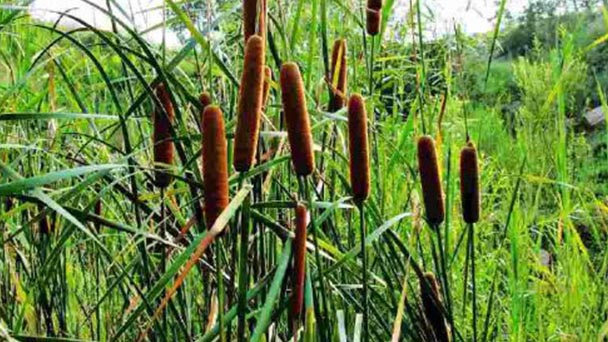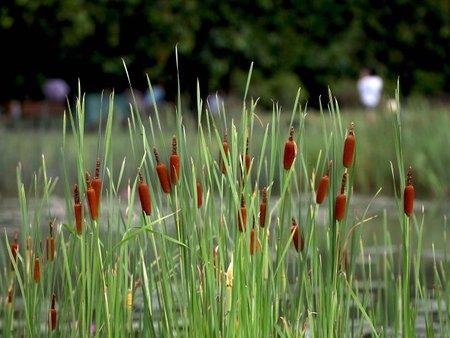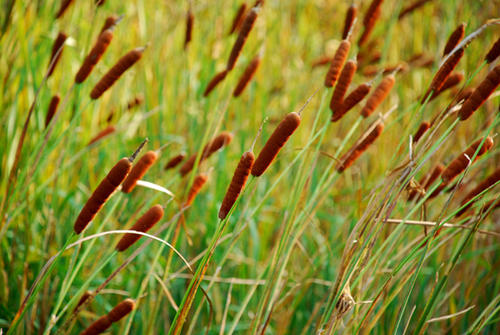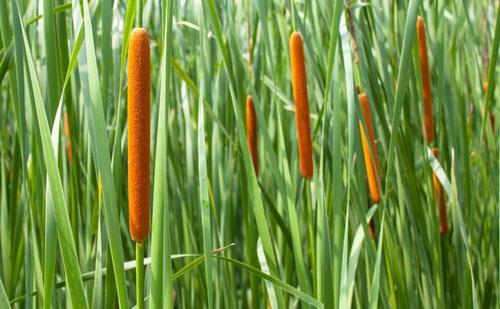How to grow and care for Bulrush
Written by Maggie
Dec 22 2020

This is about how to grow and care for Bulrush, hoping to be helpful for you during growing Bulrush.

How to grow Bulrush
Bulrush should be planted in a sunny, ventilated and transparent place. The management is more extensive, and we can see flower calamus management. Bulrush can be sown and plant farming, generally with plant farming. In early spring, the old plants can be dug up and cut into several clumps with a sharp knife, each cluster with a number of small buds as breeding materials. Generally 3- 5 years replant Bulrush, to prevent root aging, not flourishing.
Before spring germination, the underground rhizome was taken out and cut into a section of about 10cm with 2-3 buds. After the rhizome was planted in the soil, the stem buds grew horizontally to more than 30cm in the soil, and the terminal buds turned to grow upward and suck out fresh leaves, and the roots grow downward to form new plants. As the underground rhizome of each plant extends in all directions, new plants continue to grow, gradually forming a colony. After three consecutive years of growth, the root system of Bulrush was staggered and compacted, soil fertility declined, plant growth declined, and the Bulrush had to be replanted. When potted, appropriate use of loose and fertile soil, above should maintain a 5-10cm clear water layer, supply new water in time in summer, and often spray water on the leaf to keep clean. After the frost's descent, and after cutting off the droppings from the earth, he shall spend the winter in a cold chamber. Bulrush requirement to the environment is not strict, and its adaptability is stronger, and has a certain cold resistance ability. For light - loving plants, not shade, soil soft and fertile requirements. Bulrush lives in shallow lakes, ponds, ditches and so on. After planting, pay attention to shallow water maintenance, avoid too deep flooding and water loss drought, often remove weeds, and timely top dressing. After 4-5 years, due to the rapid growth of underground rhizome, crowded rhizome, overground plants are also dense, it needs root stump
In the second year after planting, the flowering increased and the yield increased. During the flowering period of June to July, when male pollen maturation and chooses sunny days, pull down male flowers by hand, dry them in the sun, rub them into pieces, and remove impurities with a fine sieve. Subterranean of Bulrush with stout prostrate rhizome, above ground stem erect terete, unbranched. Its blade is slender like a sword, the color is bright and clean, quietly elegant. Some scholars often plant it into the birdbath placed in the courtyard display, and do not have a taste.
Remove the mother plant of Bulrush from the pot in early spring every year, wash away the soil, cut the underground rhizomes into small sections 10 cm long, with 2-3 side buds on each section, and then plant them flat in the pot soil. The lateral buds on the rhizome germinate first after water, and the new rhizome is extracted from the underwater soil first. When the new rhizome grows to about 30 cm, the top buds start to germinate and bend upward to stand the excavated surface, and then the new leaves are extracted to grow into new plants. Underground rhizome is also expanding and spreading ceaselessly as the growth of the plant, after 2 years can be full of whole basin, at this moment old rhizome gradually Withers, new rhizome has no place to extend, growth potential also follows decline, so should 2 years replant 1 time. Bulrush has strong cold resistance. In winter, the basin can be stored on the balcony or on the south side of the outdoor house, and it is ok to freeze in the basin. Bulrush likes enough sunshine, so this should be in the all year round outdoor display.

How to care for Bulrush
It is advisable to choose swamps or river-lake beaches with deep soil silt and organic matter content of more than 1.5% for growing Bulrush.Water depth is easy to control.
If the water is too deep or prone to drought, the underwater soil is too sandy, too sticky, and is not easy to choose.
If the soil under the soil is soft and fertile, no ploughing is needed. Weeds can be removed and slightly leveled. Such as water under the soil is more solid, it should be as far as possible to put a shallow water layer, tillage, leveling.
Human excrement and urine of 5,000-7,000kg per 667m2 was applied as basal fertilizer.
In spring, field planting temperature rises to 15-20℃. For example, in the Huaihe River basin, seedlings are selected and planted in early April.
Before planting, experts from the Seedling exchange remind to select the plants with the characteristics of the planted varieties and strong growth as seedlings from the remaining nursery.
Seedlings with roots and mud digging, digging along with the plant, planting density of 0.5 meters to square.
If the blade of a seedling is too long, cut off the top end to prevent swaying due to wind after planting.
Field management of Bulrush
1. Water depth management: Bulrush requires the water layer to be of moderate depth and maintain 15-20 cm of shallow water in the early stage to improve earth temperature. However, drought should be strictly prevented to avoid inhibiting nutrient growth and causing a large number of flowering plants. Later, as the Bulrush grows, the water depth gradually deepens to 60-80 cm, the deepest should not exceed 120 cm.
Water depth control is an important link to improve Bulrush's quality and yield.
2. Topdressing: generally, about 1 month after planting, apply topdressing manure or barnyard manure once, 1000-1500kg per 667m2.
In the following spring, top dressing should be applied 1-2 times according to plant growth, and organic fertilizer should be applied as far as possible, with little or no chemical fertilizer, so as not to affect quality.

3. Plucking and thinning of Bulrush: before and after the start of summer, proximus (inflorescence stalks) grow out of water, and should be pulled out at any time. Meanwhile, the tender culms at the base and surrounding scapelike tender leaves can be exfoliated for proxy-buds to be put on the market.
At the same time, the combination of harvesting, between the extraction of dense plants.
Keep about 10 plants per square meter and distribute evenly.
4. Field renewal: After 3-4 years of continuous cropping by Bulrush, the underground roots are intertwined and the growth of the plants is declining, so the fields must be renewed and replaced.
There are two renewal methods: one is to select and dig new plants with the characteristics of this variety in the field in spring and transplant them into the prepared new fields; The other is to cut out a portion of the plant in alternate rows and replace it with a new one.
Latest Updated
- Benefits of Bugleweed - 7 Science-backed Health Benefits
- Bugleweed Dangers & Side Effects - Is It Poisonous?
- How to Plant Evergreen Trees - What You Should Know
- When to Plant Evergreens - Grow Guide for Evergreen Trees
- 12 Wonderful Evergreen Shrubs for Your Garden
- 12 Popular Evergreen Plants with Pictures for Beginners
- When And How To Prune A Lilac Bush Like a Pro
- How to Grow & Care for Lilac Vine (Hardenbergia Violacea)
- Japanese Lilac Tree (Syringa Reticulata) Care & Propagation Guide
- Shumard Oak Pros and Cons - What to Know
Popular Articles
- Winter maintenance of Antirrhinum Majus
- How to Grow Terminalia Mantaly Tree
- How to Grow and Care for Crossostephium Chinense
- How to grow Antirrhinum Majus in spring
- Peristeria Elata (Dove Orchid) Profile: Info & Care Guide
- Underwatered Snake Plant (Sansevieria Trifasciata) - Signs And How To Fix
- How to Care for Brazilian Jasmine Plant (Mandevilla Sanderi)
- How to Grow & Care for Graptopetalum Purple Delight in Summer
- Rosa Chinensis (China Rose): Plant Growing & Care Tips
- How to Care for Baby Sun Rose (Aptenia Cordifolia)